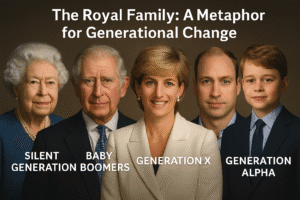With looks more Bon Jovi than Beethoven, and legions of devoted fans, Eric Whitaker is not a traditional classical composer.
It was one of these fans in 2009 who contacted him to announce she’d videoed herself singing one of his compositions and uploaded it to YouTube. This gave Eric an idea. What happened next is Internet folklore.
Eric put out a call to his followers asking them to send him clips of themselves singing one his choral songs. Videos of people singing in their homes poured in from all over the world.
These were then assembled into a webpage featuring hundreds of individual clips, all aligned to make them look like a ‘real’ choir. Consisting of nearly two hundred video clips, its online debut was viewed by 6.3million people – a figure that would take the Royal Opera House ten years of sold out nightly performances to reach.
Responses to the Internet choir were mixed. Some saw it as an opportunity for ending the elitism traditionally associated with classical music. Others viewed it as terrifying metaphor for the future of organisations – a glimpse into a distant future of work in which remote organisations would exist solely on digital platforms, without any ‘real-world’ presence.
And then, in March 2020, the future suddenly happened.
With the outbreak of Covid-19, fifty million people have found themselves working from home via the digital platforms pioneered by Eric over a decade ago. Prior to the pandemic, only about a quarter (23.7%) of the US workforce worked from home on a regular basis. Once the pandemic struck, this rocketed to over 80%.
Between March and April 2020, eight-out-of-ten firms across the world had implemented flexible working arrangements. Those that hadn’t were working on it.
This mass migration to working from home has led to a sequence of unintended consequences which are about to transform the working lives of millions. Even the royals are wfh.
So successful has the shift to homeworking been that many office workers are likely never to step foot again in an office. Who needs expensive premises if staff are just as productive working from home in their pyjamas? According to the Washington Post, up to 300 million office workers worldwide could do their jobs perfectly well from home – a fact unlikely to be lost on cash-strapped bosses and chief finance officers.
For Millennials and Generation Y, this shift has been relatively seamless. Many of them never quite got the hang of office life. But for older generations the initial exuberance of commute-free working is wearing off. Working from home for many has its benefits; it has its drawbacks, too.
Because despite its arcane routines and half-remembered conventions, office life can be fun, creative and sociable – adjectives rarely used in relation to online working. Zoom meetings are fine for transitory tasks, but once the leader signifies the meeting is at an end, watch how fast everyone hits the ‘off’ button.
Communication online functions as in a choir, vertically between the leader and the individual participants; rarely is it lateral. How many members of Eric’s internet choir know one another?
Office life offers a chance to present polished versions of ourselves – professional, organised, competent, in-control. Versions that are frequently at odds with our ‘at-home’ selves.
The remote organisation is not going to vanish once the pandemic is over. But neither is the physical office, which I predict is about to undergo a makeover to become reinvented as a hub for networking, creativity, enterprise, training and wellbeing. Instead, get ready for a blended or hybrid organisational model, which integrates the best of both.
And stand by for a boom in local choirs and other types of social clubs, which exist for nothing more than the joy of bringing people together.
Everything else is just preaching to the choir.







